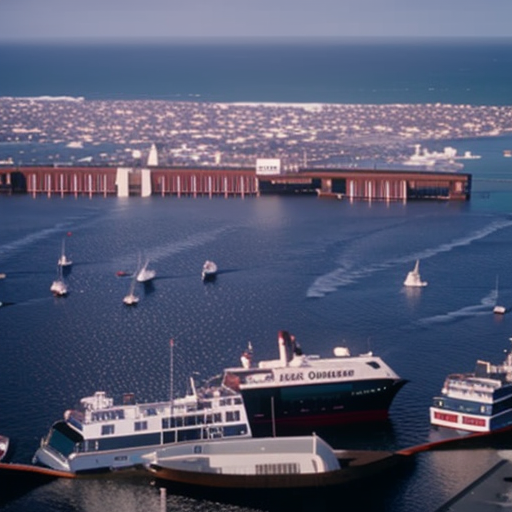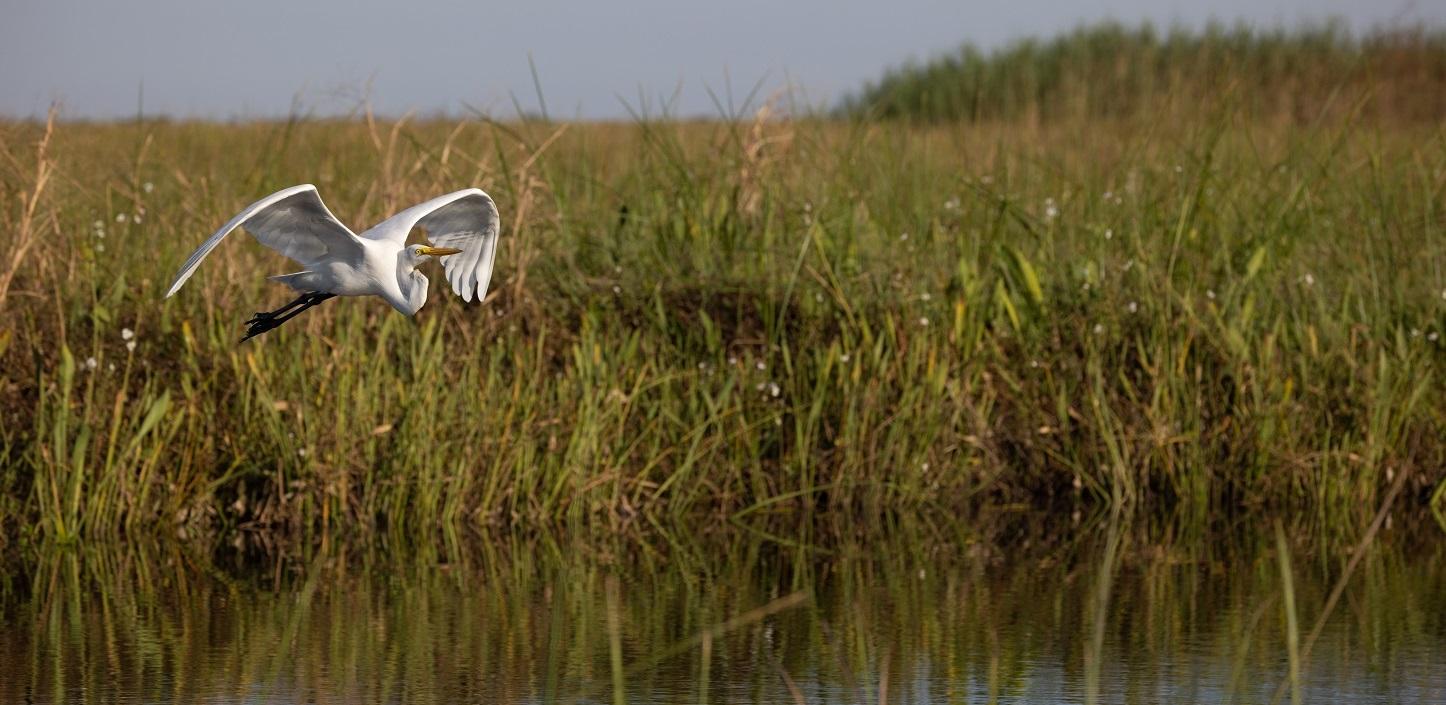
National Fish and Wildlife Foundation Announces 2024 Request for Proposals for National Coastal Resilience Fund

WASHINGTON, D.C. (February 22, 2024) – The National Fish and Wildlife Foundation (NFWF) today announced the release of the 2024 Request for Proposals for the National Coastal Resilience Fund (NCRF) and expects to invest approximately $140 million in grants—including approximately $96 million from the Bipartisan Infrastructure Law—to support nature-based solutions for coastal resilience that provide a first line of defense for coastal communities and ecosystems from increasing impacts due to rising sea levels and more intense storms.
Focus on Sustainable Development Goals
The NCRF focuses on projects that increase protection for communities from coastal hazards, such as flooding and erosion, while enhancing coastal habitats vital for fish and wildlife. NFWF also prioritizes projects that address the disproportionate risks faced by communities on the frontlines of climate change and projects that are community led or incorporate direct community engagement.
Public-Private Partnership
NCRF is a public-private partnership between NFWF, NOAA, the U.S. Department of Defense, Shell USA and Oxy.
Supporting President Biden’s Agenda
“This funding, part of President Biden’s Investing in America Agenda, offers communities a transformational opportunity to take steps to prepare for the impacts of climate change by using nature-based infrastructure,” said NOAA Administrator Rick Spinrad, Ph.D. “Investments from the Bipartisan Infrastructure Law help NOAA and our partners go further and faster to support coastal communities as they build resilience to safeguard people and ecosystems.”
Benefits of Nature-Based Solutions
“As storms and other flood hazards increasingly impact coastal regions across the country, the NCRF is a vital tool to help protect communities and enhance fish and wildlife habitat,” said Jeff Trandahl, executive director and CEO of NFWF. “Our significant investments in nature-based solutions are critical in developing more resilient communities while at the same time providing a range of additional benefits, including essential habitat restoration, improved air and water quality, and increased recreational opportunities for local communities.”
Addressing Increasing Threats
The demand for NCRF funding continues to outpace need as coastal communities and ecosystems face increasing threats. In 2023, the U.S. experienced 28 separate weather and climate disasters causing $92.9 billion in damages. NOAA research indicates that flooding will increase ten-fold in many coastal communities by mid-century as sea-levels continue to rise. At the same time important natural buffers—like wetlands and barrier islands—are being lost to erosion, inundation and development, which is diminishing the resilience of coastal communities and threatening many fish and wildlife species that depend on these habitats to breed, feed and rest.
Application Details
NCRF pre-proposals are due April 10, 2024. The full Request for Proposals can be found here.
For additional information about the NCRF please visit: here.
About the National Fish and Wildlife Foundation
The National Fish and Wildlife Foundation (NFWF) works with the public and private sectors to sustain, restore and enhance the nation’s fish, wildlife, plants and habitats for current and future generations. Chartered by Congress in 1984, NFWF has grown to become the nation’s largest private conservation grant-maker, funding more than 21,600 projects and generating a total conservation impact of $8.1 billion. NFWF is an equal opportunity provider. Learn more at www.nfwf.org.
Contact:
- Rob Blumenthal, 202-857-0166, rob.blumenthal@nfwf.org
SDGs, Targets, and Indicators
-
SDG 13: Climate Action
- Target 13.1: Strengthen resilience and adaptive capacity to climate-related hazards and natural disasters
- Target 13.2: Integrate climate change measures into national policies, strategies, and planning
- Target 13.3: Improve education, awareness-raising, and human and institutional capacity on climate change mitigation, adaptation, impact reduction, and early warning
The article discusses the National Coastal Resilience Fund (NCRF), which focuses on nature-based solutions for coastal resilience against rising sea levels and intense storms. This aligns with SDG 13, which aims to take urgent action to combat climate change and its impacts. The targets mentioned in the article are relevant to building resilience and integrating climate change measures into policies and planning.
-
SDG 14: Life Below Water
- Target 14.2: Sustainably manage and protect marine and coastal ecosystems to avoid significant adverse impacts
- Target 14.5: By 2020, conserve at least 10% of coastal and marine areas
The NCRF aims to enhance coastal habitats vital for fish and wildlife, which aligns with SDG 14’s focus on protecting marine and coastal ecosystems. The targets mentioned in the article relate to sustainable management, protection, and conservation of these ecosystems.
-
SDG 15: Life on Land
- Target 15.1: By 2020, ensure the conservation, restoration, and sustainable use of terrestrial and inland freshwater ecosystems and their services
- Target 15.5: Take urgent and significant action to reduce degradation of natural habitats
The NCRF’s focus on nature-based solutions, habitat restoration, and the conservation of coastal habitats aligns with SDG 15’s objectives. The targets mentioned in the article relate to the conservation, restoration, and reduction of degradation of terrestrial and freshwater ecosystems.
Table: SDGs, Targets, and Indicators
| SDGs | Targets | Indicators |
|---|---|---|
| SDG 13: Climate Action | Target 13.1: Strengthen resilience and adaptive capacity to climate-related hazards and natural disasters | No specific indicators mentioned in the article |
| SDG 14: Life Below Water | Target 14.2: Sustainably manage and protect marine and coastal ecosystems to avoid significant adverse impacts | No specific indicators mentioned in the article |
| Target 14.5: By 2020, conserve at least 10% of coastal and marine areas | No specific indicators mentioned in the article | |
| SDG 15: Life on Land | Target 15.1: By 2020, ensure the conservation, restoration, and sustainable use of terrestrial and inland freshwater ecosystems and their services | No specific indicators mentioned in the article |
| Target 15.5: Take urgent and significant action to reduce degradation of natural habitats | No specific indicators mentioned in the article |
Copyright: Dive into this article, curated with care by SDG Investors Inc. Our advanced AI technology searches through vast amounts of data to spotlight how we are all moving forward with the Sustainable Development Goals. While we own the rights to this content, we invite you to share it to help spread knowledge and spark action on the SDGs.
Fuente: nfwf.org

Join us, as fellow seekers of change, on a transformative journey at https://sdgtalks.ai/welcome, where you can become a member and actively contribute to shaping a brighter future.






